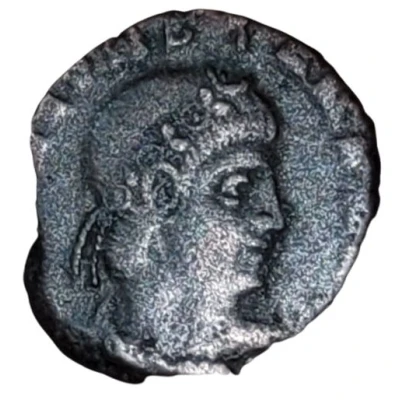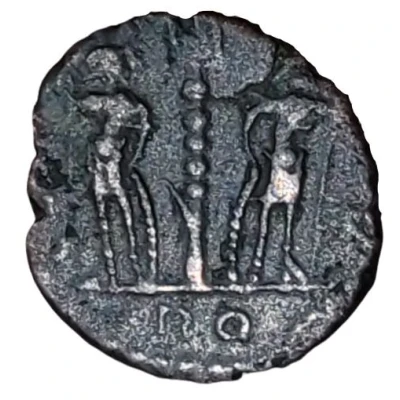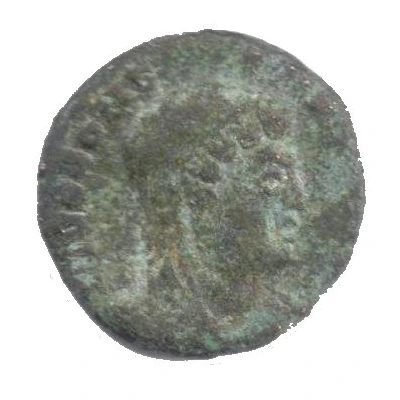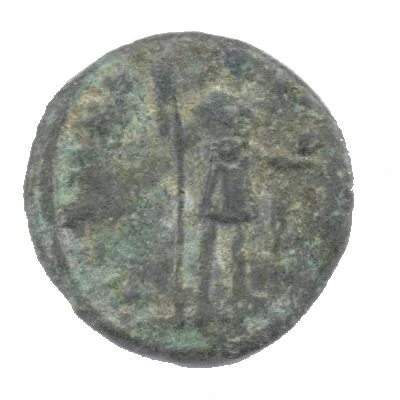


Nummus - Constans I GLORIA EXERCITVS; Rome
| Bronze | 1.68 g | 14.78 mm |
| Issuer | Rome › Roman Empire (27 BC - 395 AD) |
|---|---|
| Emperor | Constantine II (337-340) |
| Type | Standard circulation coin |
| Years | 337-340 |
| Value | Nummus (1⁄7200) |
| Currency | Solidus, Reform of Constantine (AD 310/324 – 395) |
| Composition | Bronze |
| Weight | 1.68 g |
| Diameter | 14.78 mm |
| Shape | Round (irregular) |
| Technique | Hammered |
| Orientation | Variable alignment ↺ |
| Demonetized | Yes |
| Updated | 2024-10-04 |
| Numista | N#333372 |
|---|---|
| Rarity index | 92% |
Reverse
Two soldiers, helmeted, draped, cuirassed, facing front, heads toward each other, each holding and inverted spear in outer hand and resting inner hand on shield; between them, a standard.
Mintmark and officina between two palm branches in exergue.
Script: Latin
Lettering: GLOR-IA EXERC-ITVS
Unabridged legend: Gloria exercitus.
Translation: To the glory of the army
Interesting fact
The Nummus - Constans I coin was part of a large-scale currency reform implemented by Emperor Constans I in the early 4th century AD. The reform aimed to address the inflation and economic instability of the Roman Empire by introducing a new standardized system of coinage. The Nummus coin, which was made of bronze and had a standardized weight and size, was introduced as a replacement for the older and more variable coinage system. This coin features the emperor's name, Constans, on one side, and the legend "GLORIA EXERCITVS" (Glory of the Army) on the other, highlighting the importance of the military in Roman society.

